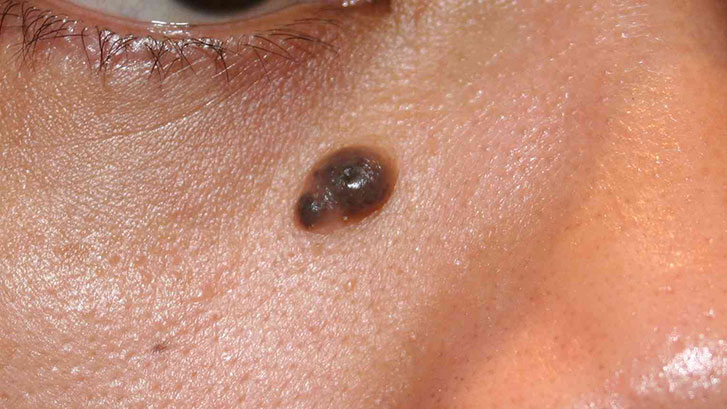What to Do if You Think You Have a Cancerous Mole
As we get older, our bodies change. Usually changes are just part of the aging process, but sometimes they can indicate serious health problems, like skin cancer. Fortunately, when discovered early, skin cancer is highly treatable. However, this also means that it’s important to regularly check yourself for possible skin cancer and to act as soon as possible if you notice something unusual.
Recognizing a Cancerous Moles
The first indicator of skin cancer is typically changes in the skin. This can be changes in the moles you already have or the development of what appears to be a new mole. Dermatologists recommend the ABCDEs test for screening one’s self for skin cancer in order to detect cancer as early as possible.
This test involves checking your moles for five different signs of skin cancer. If your moles show any of these signs, you may have skin cancer.
- Asymmetry: If some part of the mole varies from the typical round shape of moles, the mole may be cancerous or precancerous.
- Border: Benign moles have smooth, defined borders, but cancerous or precancerous moles may have uneven or unclear borders.
- Color: While healthy moles are typically uniformly colored some shade of brown, cancerous moles are often inconsistently colored and may have red, white, or blue shades.
- Diameter: Cancerous moles are typically larger than benign ones, which are usually smaller than a pencil eraser, about a quarter inch in diameter; but cancerous moles are often smaller than this when they are first detected.
- Evolving: Benign moles typically remain the same throughout time, but cancerous or precancerous moles may be show change. If you’re not sure if your mole is changing or not, try regularly taking pictures so that you can compare its appearance over time.
If you notice any of these signs, contact a dermatologist who can examine your mole and determine if a biopsy is needed to test for skin cancer. If your doctor finds that you do have skin cancer, or a precancerous mole or growth, you will typically need to arrange for surgery to remove the cancer or precancer.
Mole Removal Surgery
The exact process of mole removal surgery is different for each patient, because each patient’s health and cancer growth is different, but most surgeries follow this basic pattern.
First, the patient is anesthetized, and then the actual removal occurs. Small cancer lesions typically require only a basic excision surgery. However, skin cancer can also reach deep into the skin without clear borders. If this is the case, surgeons typically use a surgical technique called Mohs micrographic surgery. This technique requires the removal of the cancer lesion and the surrounding tissue layer by layer, with each layer sent to the lab for testing for cancer cells. Layers continue to be removed until test results indicate that no more cancer cells are present.
Some patients, especially those with deeper cancer growths, may need reconstructive steps after their cancer is removed. All patients should plan on going back to their doctor later for additional tests to ensure that all traces of cancer are definitively gone.
Choosing the Right Surgeon for Your Procedure
When most people think of skin cancer removal they think of a dermatologist or oncologist; but for patients with facial skin cancer, a plastic surgeon is often the better choice. However, not just any plastic surgeon is qualified to perform skin cancer removal surgery. Patients should choose an experienced plastic surgeon who specializes in reconstructive facial plastic surgery.
Furthermore, it’s not just important to choose the right kind of doctor, it’s also important to choose the right individual doctor. Your surgeon is imperative in keeping you relaxed and confident during the process, from diagnosis to follow up, which can be very stressful for patients. Your surgeon should take the time to make sure you are comfortable and fully informed about the process.
Dr. William J. Binder
Skin cancer is a serious disease and you deserve the best possible surgeon to help you through the cancer removal process. If you’ve recently gotten a skin cancer diagnosis or are suspicious that you may have skin cancer, it’s better to act sooner rather than later. Contact Dr. Binder’s office today to schedule your consultation.

